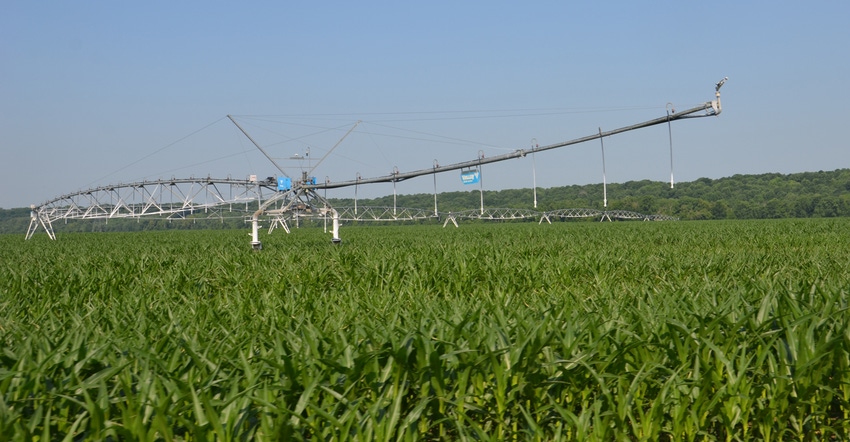July 18, 2018

By Tony Bailey and Clint Harrison
Irrigation can be helpful when Mother Nature doesn’t cooperate and send gentle, weekly rains. It’s important to get the most out of your irrigation system by ensuring the mechanics are working properly. But it’s also important not to overlook your soils. Make sure soils are fine-tuned to use all water sources, and you’ll improve overall water use efficiency.
Make sure all water gets to roots, where it can be used. If you experience irrigation-induced erosion or standing water, that’s often caused by poor infiltration of water into your soil. Using less tillage and including cover crops improves infiltration, builds aggregate stability, reduces soil compaction and increases soil organic matter.
Increasing soil organic matter with less tillage and cover crops also improves water-holding capacity. One percent of soil organic matter in the top 6 inches of soil holds thousands of gallons of water per acre. What would an additional 1% soil organic matter mean to your crop late in the season?
Reduce water loss
Evaporation is another form of water loss. A wide variety of drop nozzles and high-efficiency nozzles can be used to reduce evaporation loss. It’s recommended that you use residues on the surface to reduce runoff, improve infiltration and act as a protective barrier by reducing evapotranspiration.
Complete a uniformity test on your irrigation pivot. This test shows where too little or too much water is applied. Place catch cans at specific distances under the whole system and run it for a specified time to see how much water is applied. It’s possible for some parts of the system to underapply by 20% while other parts overapply by 20%. While it’s unlikely that this extreme swing would happen within the same system, if it did, it would lead to more interesting crop circles than what are already expected.
Another useful tool is a soil moisture probe. Use these to help schedule applications based on current field conditions. Probes can help identify if you’re getting the intended amount of water to the root zone. There are different types of probes on the market. Work with a reputable dealer to find the best probes for you. Dealers can also help with proper installation and calibration to be sure you’re receiving accurate data.
Soil probe test
Consider using soil moisture probes to create a test. Place one probe in soils disturbed by tillage without cover crops. Place another probe in soils with little disturbance where cover crops were grown. See which system gets water to roots best. Everything you do to get water to roots is critical.
During the drought of 2012, one landowner said, “We’ve invested in irrigation over the years to prepare for summers like 2012. In a field that hadn’t yet been converted to no-till and cover crops, we could only apply a half-inch of water before it began running off. Where we had three years of no-till and two years of cover crops, we could put over 2 inches of water on without runoff … that field made 230 bushels per acre!” Now, that’s water use efficiency.
Making certain your irrigation system performs at maximum capability is important. Improving water infiltration, reducing runoff and increasing water-holding capacity improve overall water use efficiency of irrigation and rainwater — and profits.
Bailey is state conservation agronomist and Harrison is a district conservationist with the Natural Resources Conservation Service. They write on behalf of the Indiana Conservation Partnership.
You May Also Like




